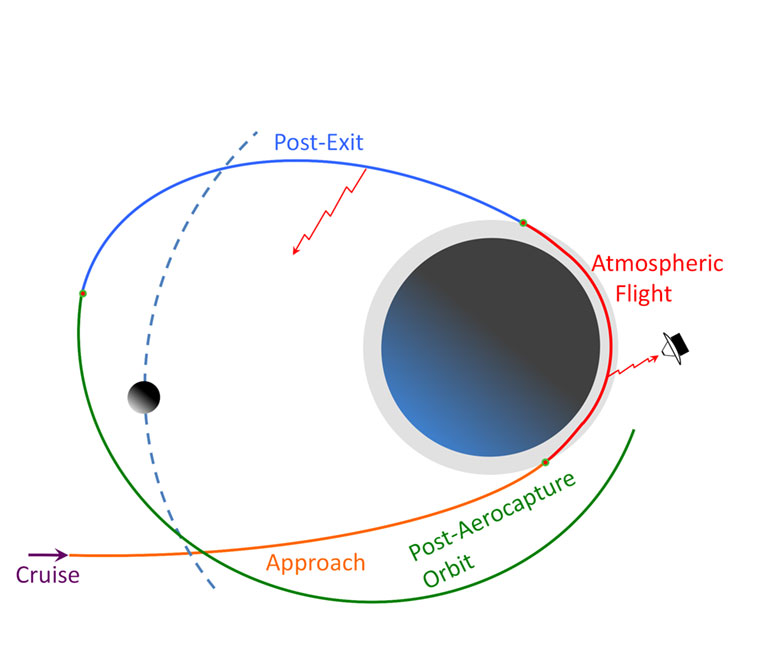The Assessment of Aerocapture and Applications to Future Missions

| Credit | Dr. Patricia M. Beauchamp, Chief Technologist, Engineering and Science Directorate, JPL-Caltech |
|---|---|
| Language |
|
Aerocapture technologies have the potential for enabling orbital missions to the outer planets and their satellites with shorter trip times than is practical when achieving orbit capture using conventional chemical propulsion. Aerocapture centers on the judicious use of aerodynamic forces in a planetary atmosphere to guide the spacecraft to a desired captured trajectory. NASA's Space Technology Mission Directorate (STMD) is investing in aeroassist technologies in response to the needs of human Mars exploration. The purpose of this study was to determine both the applicability of the STMD-developed technologies to robotic exploration and what other aeroassist technology and risk reduction investments would benefit robotic exploration, as well as assess the readiness of aerocapture technologies for potential robotic missions.
Aerocapture has been proposed for several missions over the last couple of decades, and the technologies have matured over time. This study was initiated because the NASA Planetary Science Division (PSD) had not revisited Aerocapture technologies for about a decade and with the upcoming study to send a mission to Uranus/Neptune initiated by the PSD we needed to determine the status of the technologies and assess their readiness for such a mission. The output of this study can feeds directly into that study and thus allow the team to make intelligent trades between the available technical options. However, in order to make this a broad assessment, we did not limit the planetary destination and examined Aerocapture at multiple objects.
Participants representing all aspects of Aerocapture technologies were invited to participate in an A-team study at JPL to encourage an honest and open dialogue to assess the state of the art and determine if more work needed to be done prior to use on a mission. Those that could not attend were asked to review the initial draft document and their edits have been incorporated. This document represents a consensus from those attendees and reviewers.
